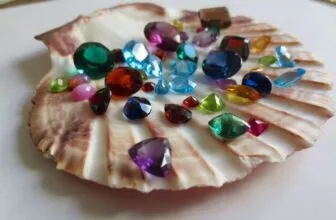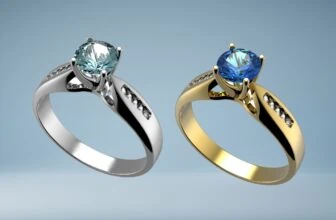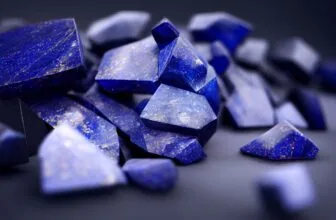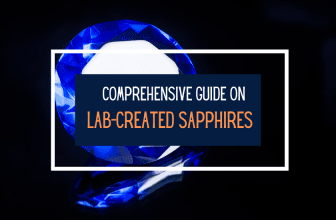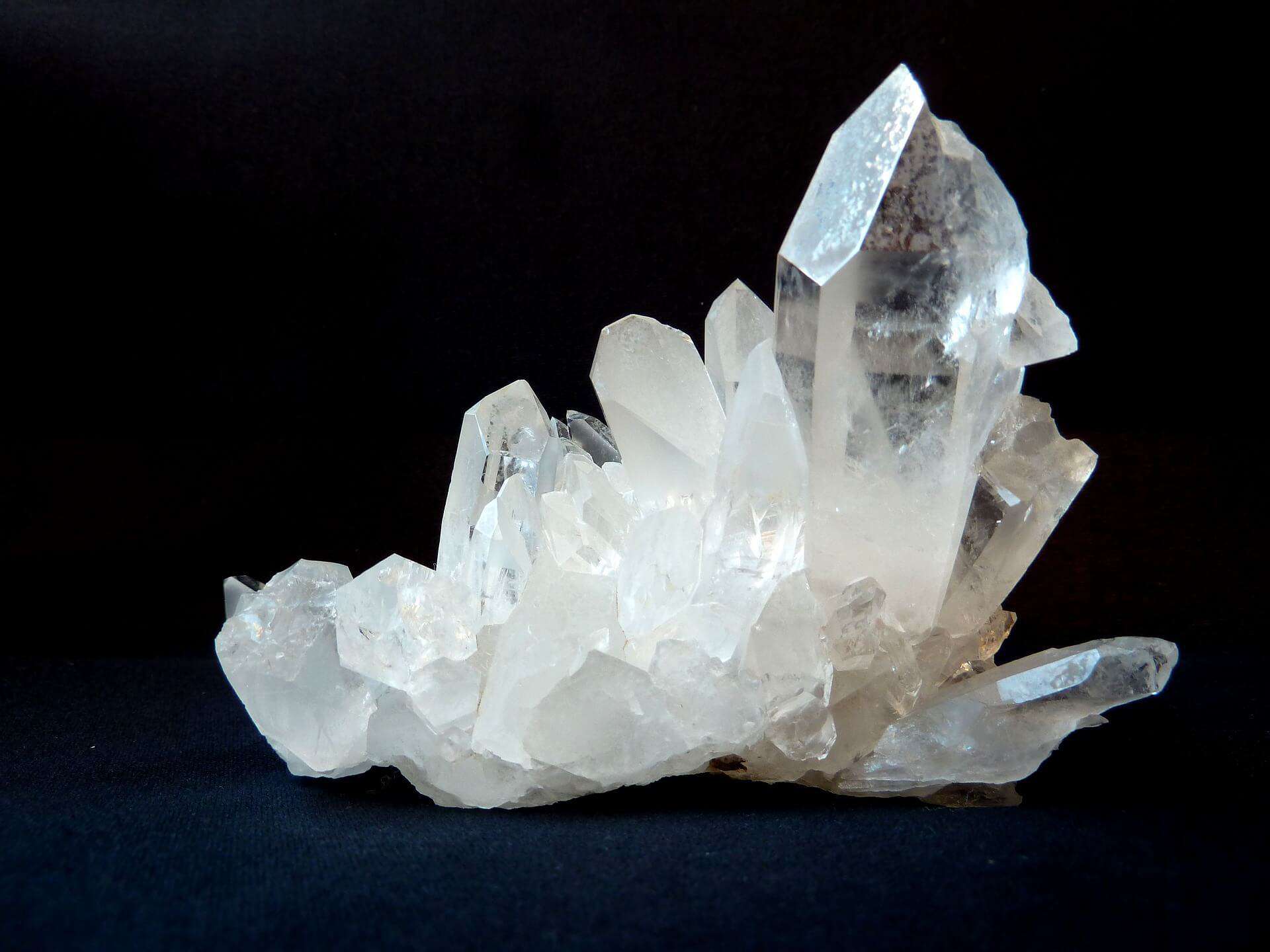
Table of Contents
White and colorless gemstones have been used since ancient times and are among the most common colors for gemstones. Unlike any other gemstone color, white and colorless gemstones blend in beautifully with any outfit, skin tone, metal, or occasion. These are stylish, classic gemstones that have a touch of sophistication.
Diamonds are the most popular gemstone of this color category, and many other gemstones such as white sapphire, white topaz, and zircon, simply serve as diamond substitutes. However, gemstones such as opals, pearls, white jade, and moonstone are each unique and beautiful in jewelry.
White Gemstone list
1. Diamonds
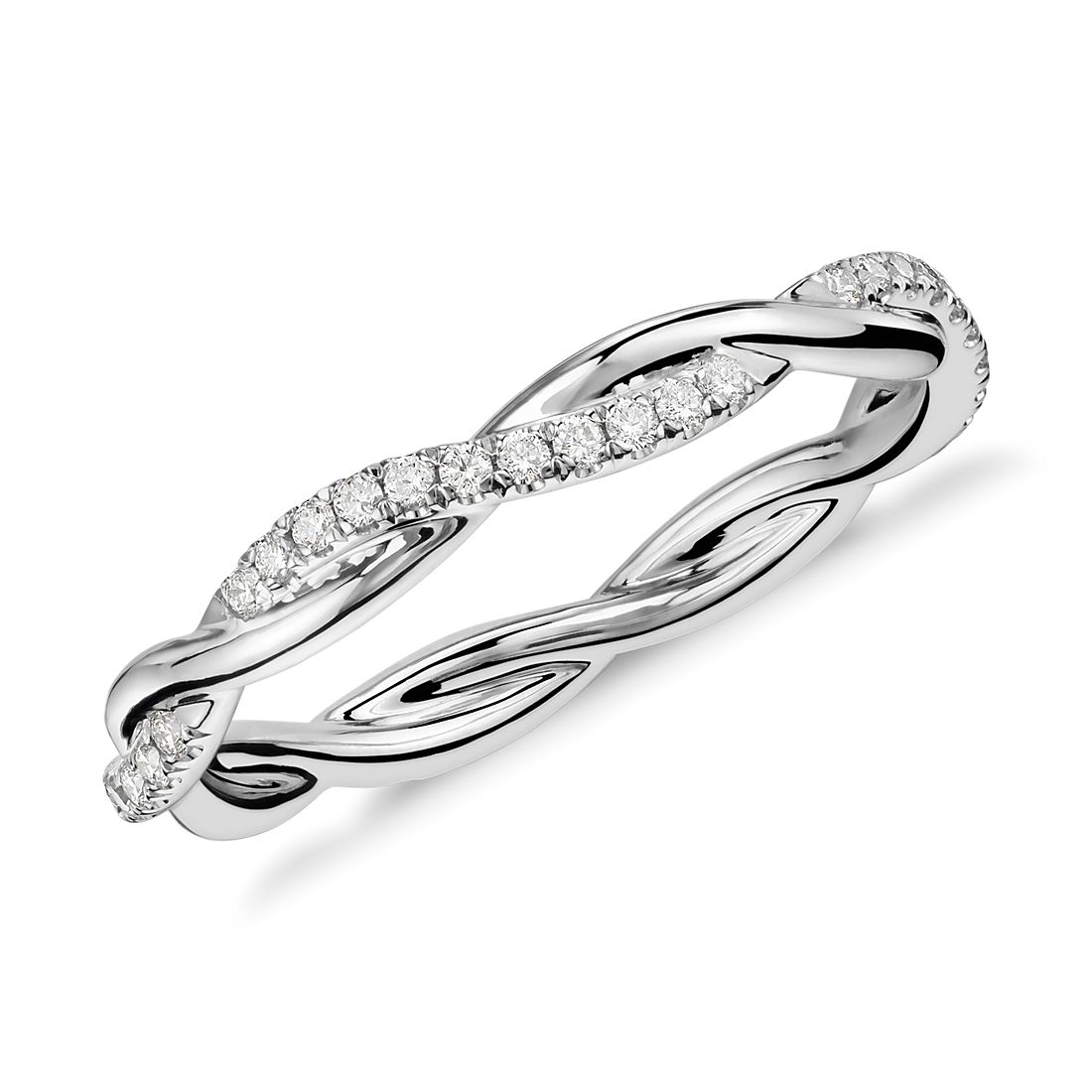
Undoubtedly, the colorless diamond is the most popularly known and highly-sought after gemstone. Diamonds have almost taken over the engagement ring market and are among the most prestigious of all gemstones. What makes a diamond so captivating?
There are many answers to this question. For one thing, diamonds are the hardest known natural substance. They virtually cannot be scratched and have the highest hardness rating (10 Mohs).
They are also extremely brilliant and when beautifully faceted, are unmatchable in their sparkle. The very term ‘diamond’ has entered the vernacular as a synonym for strength, sparkle, and class. However, diamonds are not indestructible.
The flip side of being so hard is that diamonds are also very brittle. They can crack or chip if struck with a hard blow. Although not a rare gemstone, diamonds are considered highly valuable. If a mined diamond is not for you, there is a thriving synthetic diamond market that makes it possible for buyers to choose a more affordable, ethical, and sustainable choice of diamond.
Related article: Should I buy a synthetic diamond?
2. White Sapphire
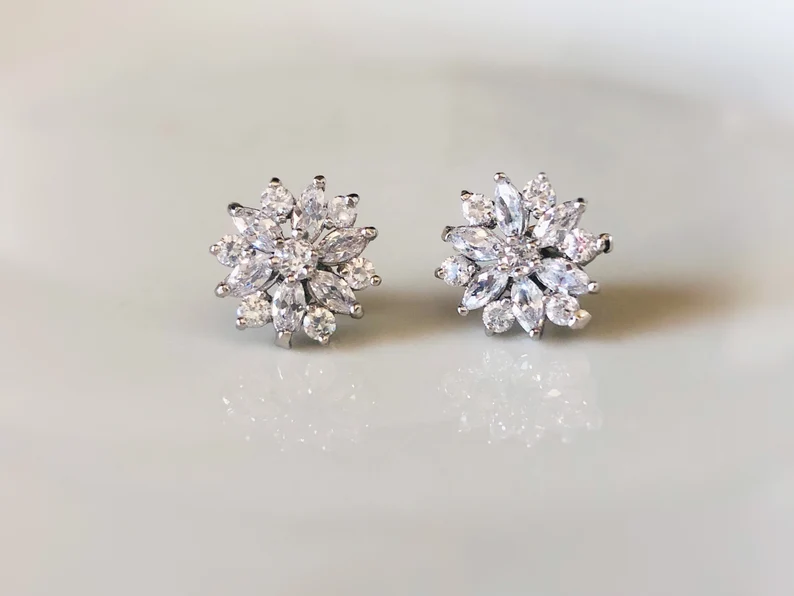
White sapphires are often chosen as a more affordable substitute for diamonds. It is the purest form of corundum and occurs when there is no inclusion of trace elements during formation. In small sizes, white sapphires are almost indistinguishable from diamonds, but larger white sapphires can appear milky or even cloudy. They are also not as brilliant as diamonds and tend to be somewhat subdued.
White sapphires are highly durable and very tough. They rank second only to diamonds on the Mohs scale at 9. In fact, sapphires are less brittle than diamonds and therefore tougher. Perhaps the most appealing feature of white sapphire is its low price point.
You can get a beautiful white sapphire stone at a fraction of the price of a diamond. While white sapphires may play second fiddle to diamonds, they are one of the four cardinal gemstones and are highly valued and precious.
Related article: White Sapphire Vs Diamond – Which should I choose?
3. White Topaz
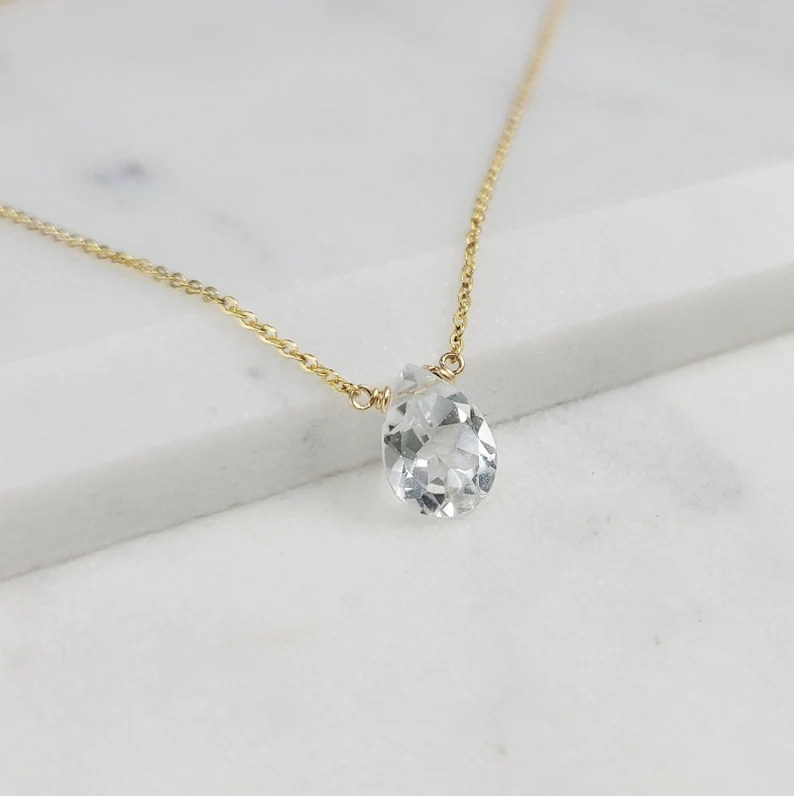
Another popular diamond substitute, white topaz is an abundantly found semi-precious gemstone. While blue topaz is the most valuable, topaz in nature is commonly white. Because topaz is quite brilliant and looks like a diamond, it is often mistaken for one. However, it is not as hard as diamonds (8 Mohs) and nowhere near as expensive. A high-quality white topaz stone is within most people’s budgets.
It’s important to keep white topaz clean and free from dirt and grime, as this will reduce its sparkle and make it appear foggy. You can choose from white to colorless varieties depending on your preferences.
Related article: White Topaz Vs Diamond – Which should I choose?
4. Zircon
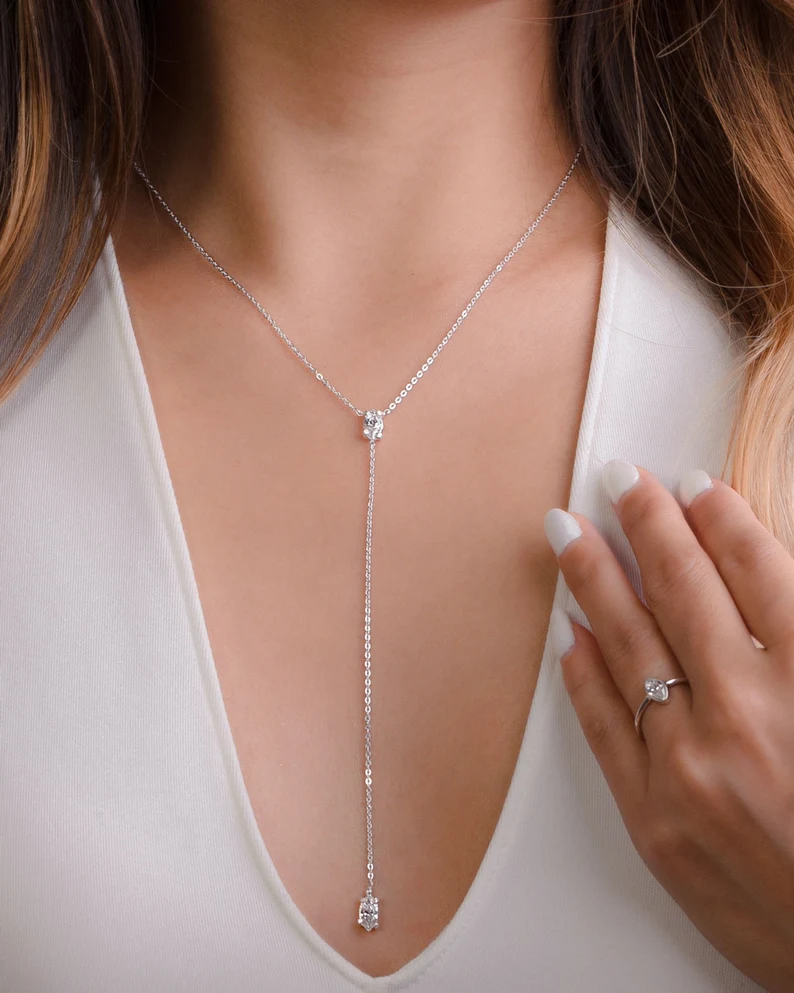
Zircons were possibly the first gemstones used as diamond substitutes, before technology made synthetic versions possible. Even today, white zircon is a popular alternative to diamonds. Unfortunately for zircons, they are often confused with cubic zirconia, a cheap, synthetic diamond simulant.
Zircons have a brilliance and sparkle comparable to diamonds. They have a very high refractive index and are able to reflect light beautifully. Due to this, zircon is always faceted to enhance its brilliance.
It can be cut into any gemstone shape. However, zircon ranks at 6 to 7.5 on the Mohs scale and is not very durable. It is also not very tough due to its brittleness and is not resistant to chipping and breaking.
Zircon provides another affordable natural alternative to diamonds.
5. White Agate

Agate is found in every color under the sun with white being one of its more popular colors. White agate can be found in near colorless to milky white varieties. White agate is translucent to opaque and has a smooth waxy to vitreous luster. It is quite an attractive gemstone and when set in beautiful jewelry, really stands out.
While it does not have the sparkle that most colorless gemstones are known for, white agate has a statement look. It is ideal for costume jewelry, in large necklaces, pendants, earrings, and cocktail rings. Agate is abundantly found around the world and as a result, is a very affordable gemstone. It also has very good durability (Mohs 7).
6. Pearls
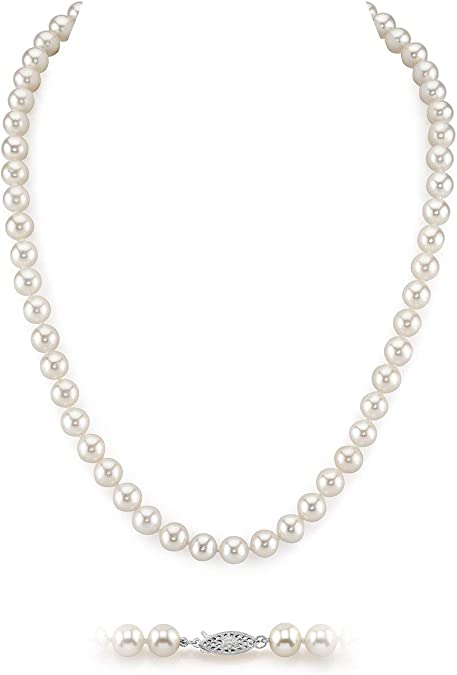
Pearls have a long and glorious history in the jewelry world and have been valued and coveted for centuries. Pearls embody sophistication and elegance and are a staple in most jewelry collections. A member of the small organic gemstone group, pearls form in molluscs and oysters naturally over a period of years.
In the past pearls used to be very expensive and only accessible to the wealthy, but with the advent of cultured pearls, these delicate gemstones have become more affordable and abundant.
Pearls possess stunning iridescence and beautiful overtones. They can be found in a variety of colors, although white pearls are the most well-known. They are quite soft and delicate (2.5 – 4 Mohs) and can easily be damaged. Pearls always cycle in and out of fashion and are currently in high demand.
7. Moonstone
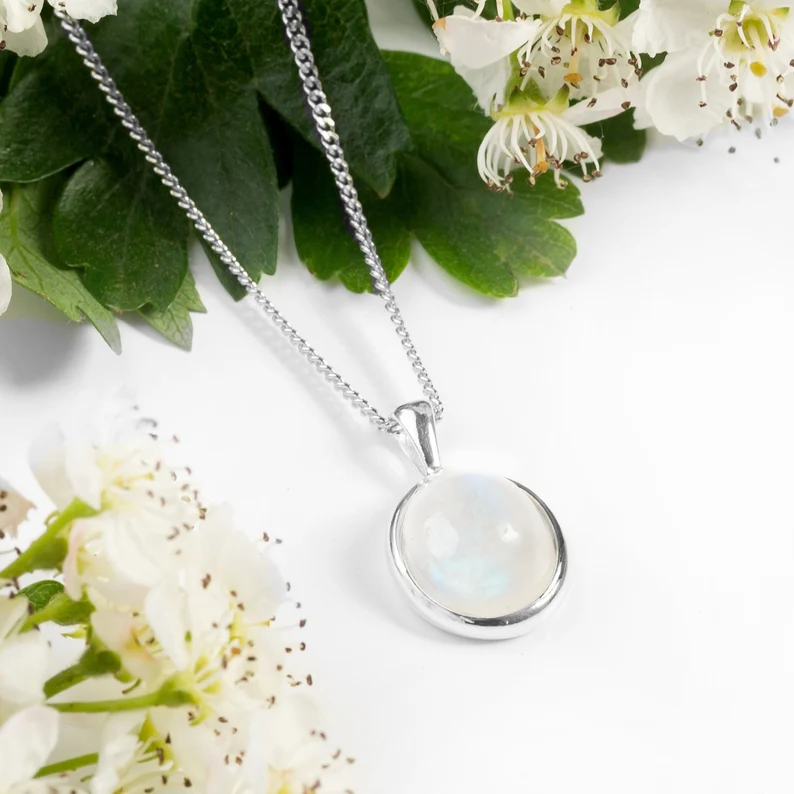
Moonstones are known for their smooth appearance and attractive sheen. Moonstones make for beautiful jewelry and pair well with any metal color. Some people choose moonstone engagement rings, but this isn’t recommended as it is not a highly durable gemstone (6 to 6.5 Mohs). The stone can easily scratch or get damaged, so reasonable care is required to ensure that the jewelry lasts.
Raw unpolished moonstone is a beautiful way to wear the gemstone, although smooth cabochon-cut moonstones are more common. They are ideal for all styles of jewelry but are particularly eye-catching when set in bohemian and vintage settings.
8. White Opals
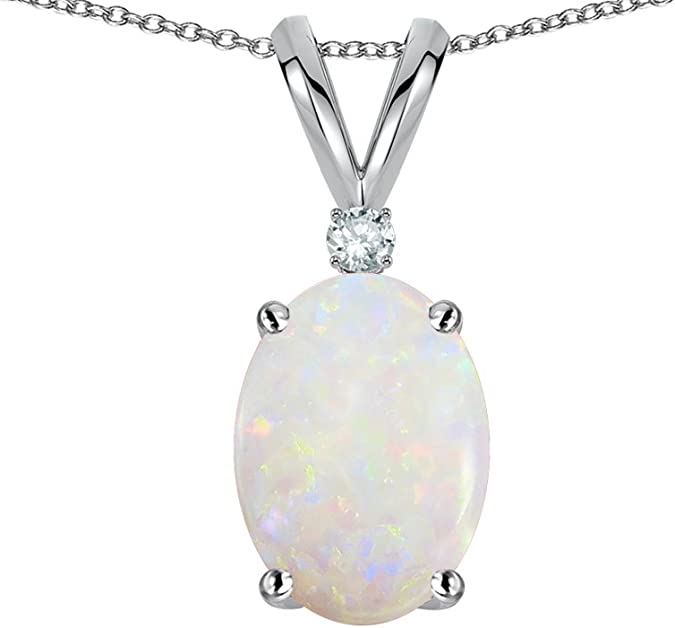
The most common type of opals is the white stones, often called milk opals or light opals. This variety of opals has a milky white body and is the most commonly found type of opal. They often contain a beautiful radiance, known as opalescence.
Opals with dark body tones are considered more valuable because they display stronger flashes of color, but white opals can also exhibit many colors. They are usually cut en cabochon to maximize the iridescence and luster of the stone.
Opals are simply stunning natural gemstones, with most of the world’s supply coming from Australia. Opals are vibrant and dynamic, coming alive when touched by light. While opals aren’t recommended in rings unless placed in protective settings, they are suitable for most types of jewelry.
9. White Jade
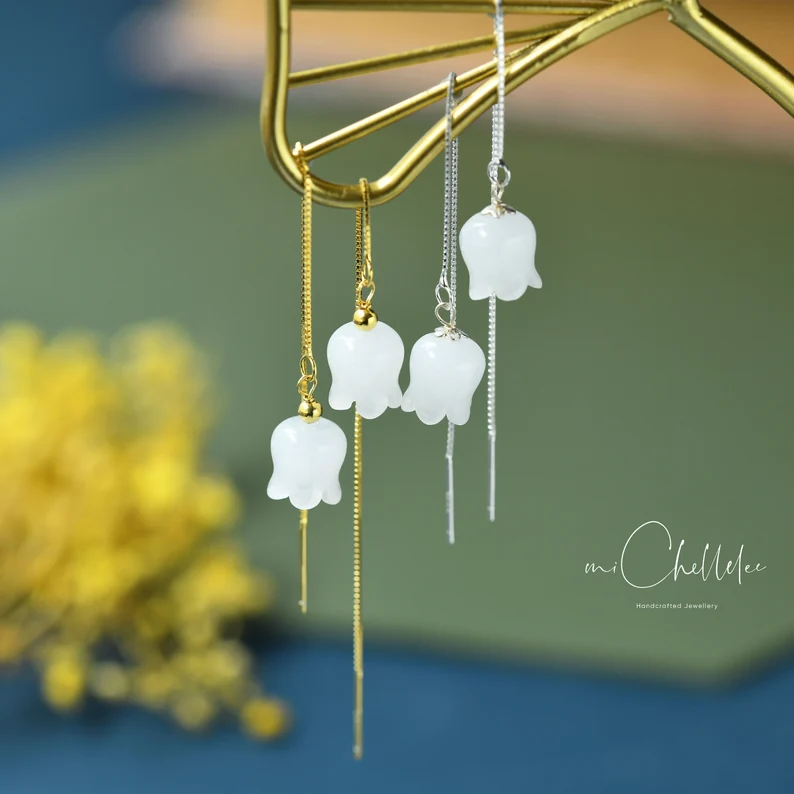
The most well-known color of jade is green, but jade comes in many colors including white. Of the two varieties of jade (nephrite and jadeite), jadeite is more valuable and of better quality than nephrite. Nephrite is more commonly found and is quite affordable.
Because of jade’s compact structure, it is a very tough stone and due to its relative softness (Mohs 6) it is ideal for carvings, engravings, and sculptures. Jade is often cut en cabochon, to show off its smooth and waxy luster but is sometimes faceted for added depth. White jade is quite attractive and perfect for almost all types of jewelry.
10. White Jasper
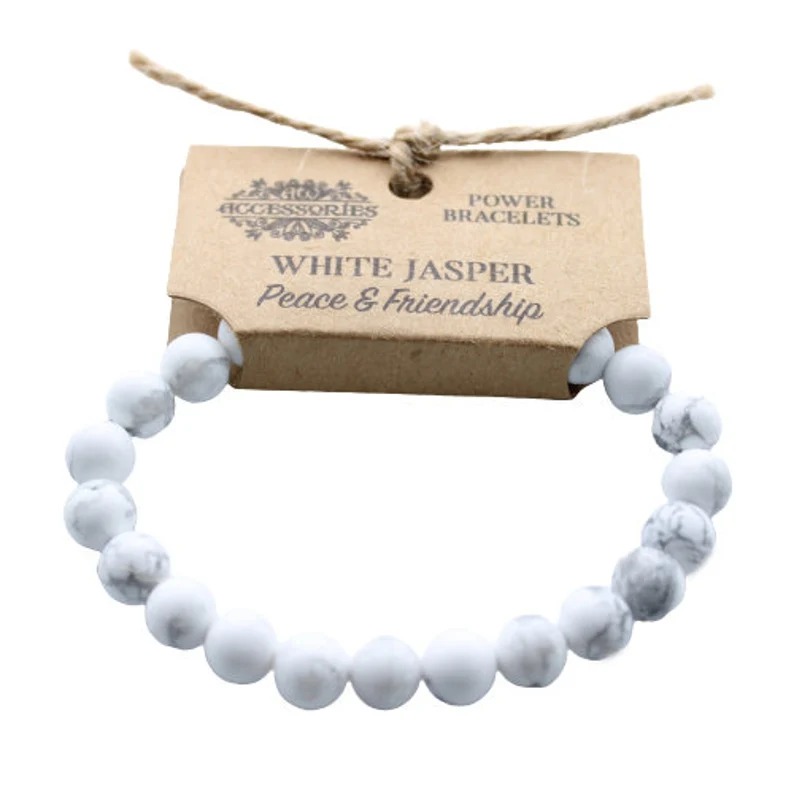
Jasper is a variety of chalcedony, which is a type of quartz. Like jade, jasper is very tough and compact in composition, lending itself perfectly to cabochon cuts, carvings, and various types of jewelry. Most jasper is translucent to opaque in clarity and often contains dark matrix inclusions and patterns.
These are often grey or black in color and are quite desirable as they add character to the stone. Jasper is affordable and plentiful, making it a perfect choice for costume jewelry.
11. White Quartz
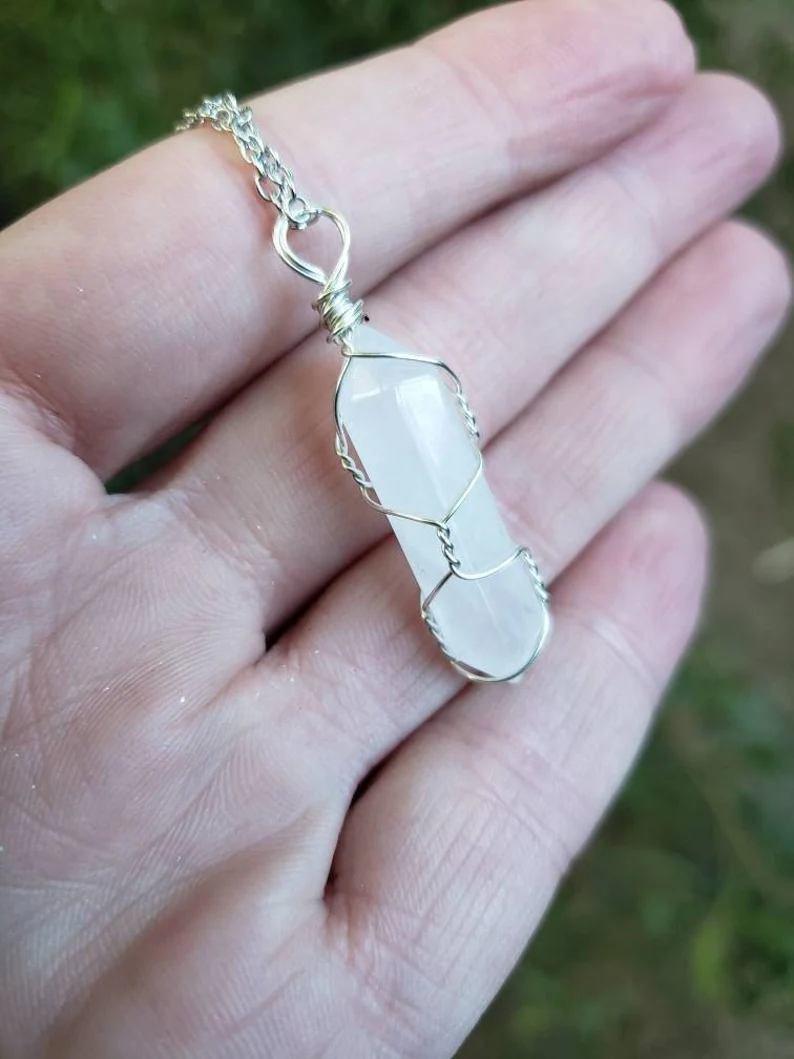
White quartz is a glass-like gemstone that is sometimes used as a diamond substitute. It is also known as rock crystal. White quartz has excellent transparency and is durable enough for regular wear (7 Mohs).
Also, it is abundantly found around the world and therefore quite affordable. White quartz is not very brilliant and can sometimes look like a piece of glass. To give the stone some brilliance, it is often given a brilliant cut, like that of diamonds. White quartz is ideal for large fashion jewelry and statement pieces.
12. Goshenite
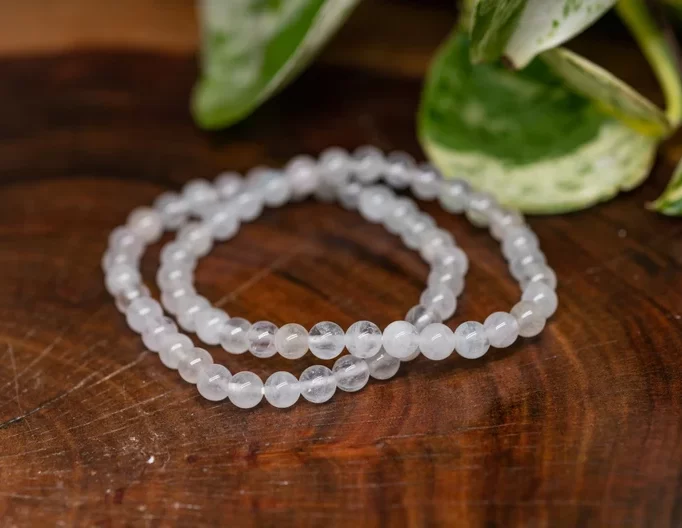
If you’ve never heard of goshenite before, you’re not alone. Most shoppers don’t know about this gemstone. However, most people have heard of its famous cousins, emerald, aquamarine, and morganite. Goshenite is the colorless variety of the mineral beryl. It is a highly transparent gemstone, often with very few visible inclusions.
Like all beryl varieties, goshenite has very good hardness (7.5 to 8 Mohs) and good wearability. It is suitable for all types of jewelry, including rings. While some may choose to use it as a diamond substitute, goshenite is not very brilliant so the difference between it and diamonds is quite apparent. While it lacks the fire and brilliance of diamonds, it is a more affordable choice than diamonds.
13. Chabazite
Chabazite is a zeolite mineral that is typically found in volcanic rocks and other igneous formations. It is named after the Greek word “chabazios,” which means “a piece of stone.” Chabazite is a relatively soft mineral, with a hardness of 4.5 to 5 on the Mohs scale, and it has a vitreous to pearly luster.
Chabazite is commonly used as an industrial adsorbent, as it has a high surface area and can absorb large amounts of water and other molecules. It is also used in the production of catalysts for chemical reactions and as a filter medium for water treatment.
In terms of its physical properties, chabazite is typically colorless or white, although it can also be found in shades of yellow, pink, and red. It has a cubic crystal structure and is often found in clusters of interlocking crystals. Overall, chabazite is a versatile mineral with a wide range of industrial applications.
14. Phillipsite
This zeolite mineral is commonly found in volcanic rocks and other igneous formations. Phillipsite ranks at 4.5 to 5 on the Mohs scale, and it has a vitreous to pearly luster. It has a high surface area and can absorb large amounts of water and other molecules, making it useful as an industrial adsorbent and filter medium for water treatment. It is also used in the production of catalysts for chemical reactions.
Phillipsite is typically colorless or white, although it can also be found in shades of yellow, pink, and red. It has a cubic crystal structure and is often found in clusters of interlocking crystals.
15. Ulexite
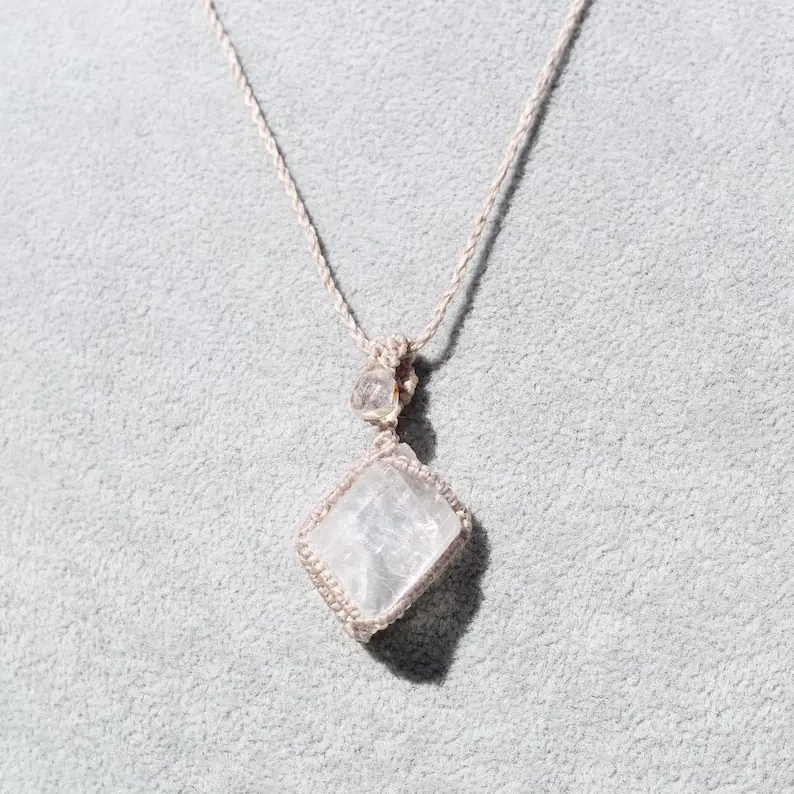
Ulexite is a naturally occurring mineral composed of hydrated sodium calcium borate. It is also known as “TV rock” due to its unique optical properties, which can be used to display images when placed over a printed image or text. Ulexite is commonly found in arid regions and is typically white or light gray in color.
In addition to its use in displaying images, ulexite is also used as a raw material for the production of boron compounds, which are used in a variety of industrial applications. Ulexite has a hardness of 2.5 to 3 on the Mohs scale, making it a relatively soft mineral that can be easily scratched.
Overall, ulexite is a unique and versatile mineral with a range of industrial and commercial applications. Its optical properties make it a popular choice for display and decorative purposes, while its boron content makes it an important raw material for various industrial processes.
16. Wollastonite
Wollastonite is a naturally occurring mineral composed of calcium, silicon, and oxygen. It is named after the English chemist and mineralogist William Hyde Wollaston, who first identified it in 1815. Wollastonite is commonly found in metamorphic rocks and is used in a variety of industrial applications, including ceramics, plastics, and construction materials.
One of the unique properties of wollastonite is its acicular or needle-like crystal structure. This makes it useful as a reinforcement material in composites, where it can improve the strength and durability of the final product. Wollastonite is also a good source of calcium and can be used as a nutrient in fertilizers.
In terms of its physical properties, wollastonite has a hardness of 4.5 to 5.5 on the Mohs scale, making it relatively soft compared to other gemstones. It also has a vitreous to dull luster and can be found in a range of colors, including white, gray, green, and brown.
17. Thaumasite
This rare calcium-silicate-hydrate mineral is named after the Greek word “thaumazein,” which means “to be amazed,” due to its unusual crystal structure and properties.
Thaumasite is a relatively soft mineral, with a hardness of 3.5 to 4 on the Mohs scale, and it has a white to colorless appearance. It can form as thin, fibrous crystals or in aggregates, and is often found in association with other minerals such as calcite and gypsum.
While thaumasite can be an interesting mineral specimen, it is also a problematic mineral in construction materials, as its formation can cause significant damage and deterioration of concrete structures. This process, known as thaumasite sulfate attack, can lead to cracking, loss of strength, and ultimately, structural failure.
18. Analcime
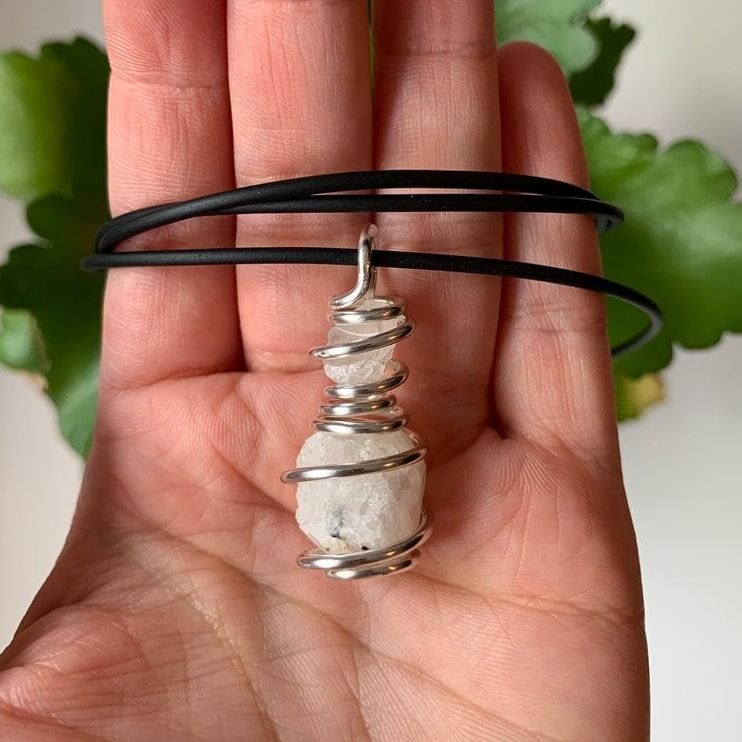
Analcime is a relatively common zeolite mineral that is found in volcanic rocks and other igneous formations. It is named after the Greek word “analkimos,” which means “weak,” in reference to its relatively low hardness of 5 to 5.5 on the Mohs scale. Analcime has a distinctive crystal structure, which is often described as a “cubic cage” made up of interconnected channels and voids.
Analcime is typically colorless or white, although it can also be found in shades of gray, brown, or green. It is often used as a decorative stone, as it has a unique appearance and can be polished to a high luster. Analcime is also used in the production of ceramics, glass, and other materials, as it can act as a flux to lower the melting point of other minerals.
19. Nepheline
Nepheline is a relatively rare silicate mineral that is primarily composed of sodium, potassium, and aluminum. It is named after the Greek word “nephos,” which means “cloud,” in reference to its cloudy or opaque appearance. Nepheline is typically found in alkaline igneous rocks such as nepheline syenites and phonolites.
Nepheline has a hardness of 5.5 to 6 on the Mohs scale. It is usually white or gray in color, but it can also be found in shades of yellow, brown, or green. Nepheline is sometimes used as a substitute for feldspar in the production of ceramics, as it has similar properties but is less expensive.
In addition to its commercial applications, nepheline is also of interest to mineralogists and geologists due to its association with alkaline igneous rocks and its use as an indicator of certain geological processes.
20. Hackmanite
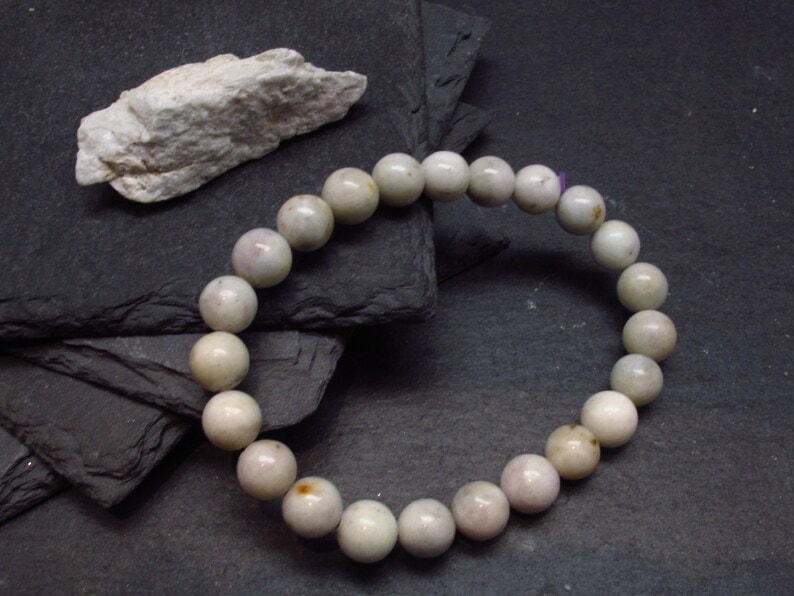
Hackmanite is a rare variety of the mineral sodalite that exhibits a unique property known as tenebrescence. This means that it undergoes a reversible color change when exposed to light or heat, from white or pale gray to a more intense purple or violet hue. The color change can be seen within seconds or minutes of exposure and can last for several hours or even days.
Hackmanite is found in igneous rocks such as nepheline syenites and can also occur in metamorphic rocks. It has a hardness of 5.5 to 6 on the Mohs scale and a vitreous to greasy luster. Hackmanite is typically white or gray in color, but it can also be found in shades of pink, blue, or violet.
In addition to its interesting optical properties, hackmanite is also used as a gemstone and in the production of ceramics and glass. Its unique color-changing ability makes it a highly sought-after and valuable mineral for collectors and enthusiasts.
21. Benitoite
Benitoite is a rare mineral that is primarily found in California. It’s known for its striking blue color, which is caused by the presence of trace amounts of titanium and iron in its crystal structure.
Due to its rarity and beauty, benitoite is highly valued in the field of jewelry. When cut and polished, it can exhibit a range of blue hues, from pale sky blue to a more intense sapphire blue. Benitoite is often used in rings, earrings, and other jewelry items that can showcase its stunning color and unique properties.
Benitoite has a hardness of 6 to 6.5 on the Mohs scale, making it relatively durable and suitable for everyday wear. However, due to its rarity and high value, benitoite jewelry pieces are often considered to be collector’s items and are typically kept in safe storage when not being worn.
22. Cerussite
This mineral is composed of lead carbonate and is known for its brilliant luster and stunning crystal formations. It can be found in a range of colors, including white, gray, brown, and green, and is often used in jewelry due to its beauty and relative durability.
When cut and polished, cerussite can exhibit a range of colors and unique crystal formations, making it a popular choice for jewelry designers. It has a hardness of 3 to 3.5 on the Mohs scale, which means it is quite soft and may require some extra care when being worn.
Aside from its use in jewelry, cerussite is also used in the production of lead, as well as in the manufacturing of glass and ceramics. However, due to its toxic nature, its use in these applications is limited.
23. Datolite
Datolite is a calcium boron hydroxide mineral that is typically found in igneous and metamorphic rocks. It is known for its translucent to transparent appearance and range of colors, which can include white, yellow, brown, green, and even pink.
In the field of jewelry, datolite is a relatively uncommon gemstone but is valued for its beauty and unique appearance. Due to its relative softness (5 to 5.5 on the Mohs scale), datolite is often used in earrings and pendants rather than in rings or bracelets, where it may be more prone to damage.
Datolite is also used for various industrial applications, particularly in the production of boron compounds. It can also be used as a source of calcium and as a fluxing agent in the production of ceramics.
24. Apophyllite
Apophyllite is a mineral composed of hydrated potassium calcium silicate and is known for its unique crystal formations and sparkling appearance. It is typically found in volcanic and sedimentary rocks.
This gemstone is often used in earrings and pendants due to its softness (4.5 to 5 on the Mohs scale), which can make it more prone to damage when worn in rings or bracelets.
When cut and polished, apophyllite can exhibit a range of unique crystal formations, including pyramid-shaped structures and clusters of delicate, needle-like crystals. Its sparkling appearance and range of colors make it a popular choice for designers looking to create distinctive and eye-catching jewelry pieces.
25. Scapolite
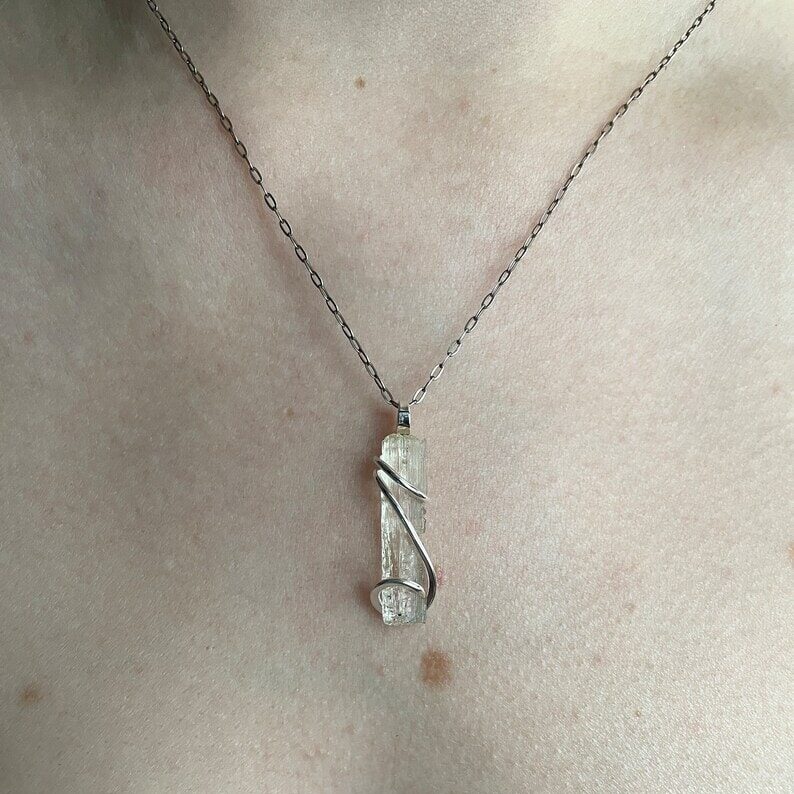
Scapolite is a mineral that is composed of complex silicate compounds and is known for its range of colors, which can include yellow, brown, pink, purple, and blue. It is usually found in metamorphic and igneous rocks and can be distinguished by its distinctive crystal formations and unique physical properties.
Scapolite can exhibit various colors and crystal formations, including elongated prisms and pyramidal structures. Because of its relative hardness (5.5 to 6 on the Mohs scale), scapolite is often used in earrings, pendants, and rings, where it can withstand regular wear and tear.
Scapolite is also valued for its metaphysical properties and is believed to have a number of healing and protective properties. It is said to enhance clarity of thought and promote inner peace and emotional stability, making it a popular choice for those seeking to enhance their spiritual well-being.
Which White or Colorless Gemstone Should I Choose?
For Engagement Rings
Diamonds are traditionally the most popular white or colorless gemstone used for engagement rings due to their durability, hardness, and brilliance. Diamonds are rated as the hardest mineral on the Mohs scale, making them highly resistant to scratching and damage from daily wear.
In addition to their physical properties, diamonds have a long history of being associated with love and commitment, making them a popular choice for engagement rings. They are also widely available and can be found in a range of sizes, shapes, and colors to suit any taste or budget.
However, there are also a number of alternative white or colorless gemstones that are gaining popularity for engagement rings. For example, moissanite, which is composed of silicon carbide, is a lab-created gemstone that has a similar appearance and hardness to diamonds but is more affordable. Other options include white sapphire, white topaz, and cubic zirconia, which are all durable and affordable alternatives to diamonds.
Ultimately, the best white or colorless gemstone for an engagement ring will depend on individual preferences and priorities, including factors such as durability, price, and appearance.
For Costume and Fashion Jewelry
When it comes to costume and fashion jewelry, there are a variety of white or colorless gemstones that can be used depending on the desired aesthetic and price point. Here are a few options:
- Cubic Zirconia: Cubic zirconia is a popular choice for costume jewelry due to its affordability and diamond-like appearance. It is a synthetic gemstone made from zirconium oxide and can be cut to resemble a variety of diamond shapes and sizes.
- Glass: Glass is another affordable option for costume jewelry, and can be made to look like other gemstones such as diamonds or pearls. It is less durable than other gemstones, however, and can be prone to scratching and damage.
- White Topaz: White topaz is a natural gemstone that is affordable and widely available. It has a similar appearance to diamonds and can be used in a variety of jewelry styles.
- White Sapphire: Like white topaz, white sapphire is a natural gemstone that can be used as a less expensive alternative to diamonds. It is durable and can be found in a range of sizes and shapes.
Overall, the best white or colorless gemstone for costume and fashion jewelry will depend on factors such as budget, desired aesthetic, and durability. Cubic zirconia and glass are popular options for affordable costume jewelry, while white topaz and white sapphire can be used for more durable and high-quality fashion jewelry pieces.
Soft White and Colorless Gemstones
Soft and white colorless gemstones may not be as durable as other gemstones, but they can still be used effectively in a variety of jewelry applications. Here are some ways in which soft and white colorless gemstones can be used:
- Cabochons: Soft and white gemstones such as moonstone, opal, and pearl can be used to create beautiful cabochons. A cabochon is a gemstone that has been shaped and polished without facets, which can showcase the gemstone’s unique colors and patterns.
- Carvings: Soft and white gemstones can be easily carved into intricate shapes and designs. For example, ivory, a soft white gemstone, has been used for centuries to create ornate carvings and sculptures.
- Beads: Soft and white gemstones can be used to create beautiful beads for necklaces and bracelets. For example, freshwater pearls are often used to create classic and timeless jewelry pieces.
- Accent Stones: Soft and white gemstones can be used as accent stones in larger jewelry pieces. For example, a small white opal could be used to add a subtle pop of color to a larger gemstone or metal setting.
Overall, soft and white colorless gemstones are best suited for jewelry pieces that are not subject to heavy wear or impact. With proper care, these gemstones can add a unique and delicate beauty to a wide variety of jewelry designs.
Where to Shop White and Colorless Gemstones
Almost every jewelry shop will carry diamonds or diamond simulants. While this makes it easy to find, it can make it even more difficult to choose. Here are some of the best online stores to buy white or colorless gemstones:
- James Allen: If shopping for diamonds online, we recommend choosing James Allen as they provide high-quality images and videos of the actual diamond as opposed to drawings or diagrams. They also provide the grading report for the stone from reputable gradings labs such as the GIA or AGS. They also offer reasonable prices on their diamonds.
- Amazon: Amazon has an excellent range of various types of white and colorless gemstone jewelry including loose gemstones. However, you will have to use your judgment and vet the authenticity of the stones on offer.
- Angara Jewelers: Check out Angara Jewelers for a wide selection of white and colorless gemstones, including diamonds, white sapphires, white topaz, and many more.
- Blue Nile: This store offers a collection of white and colorless gemstones, including diamonds, white sapphires, and moissanite. These gemstones are available in various sizes, shapes, and cuts, making it easy for customers to find the perfect stone for their jewelry needs.
- Etsy: An e-commerce platform that allows individual sellers to set up online shops and sell their handmade, vintage, or unique items, Etsy has a massive selection of white and colorless gemstones. You’ll be spoiled for choice.
When shopping for gemstones, always purchase from a reputable and licensed jeweler and check the origin of the stone. Ask about what treatments have been conducted on the stone and where applicable, request a certificate of authenticity. Always take some time to check the genuineness and value of the item, especially if the gemstone you are eyeing is expensive.
Wrapping Up
White and colorless gemstones, including diamonds, sapphires, topaz, and more, offer a classic and timeless look that is perfect for a variety of jewelry styles. These stones are prized for their brilliance and clarity, making them perfect for showcasing a wide variety of cuts and designs.
With their enduring appeal and versatility, white and colorless gemstones are a great choice for anyone looking to add a touch of elegance and sophistication to their jewelry collection.


